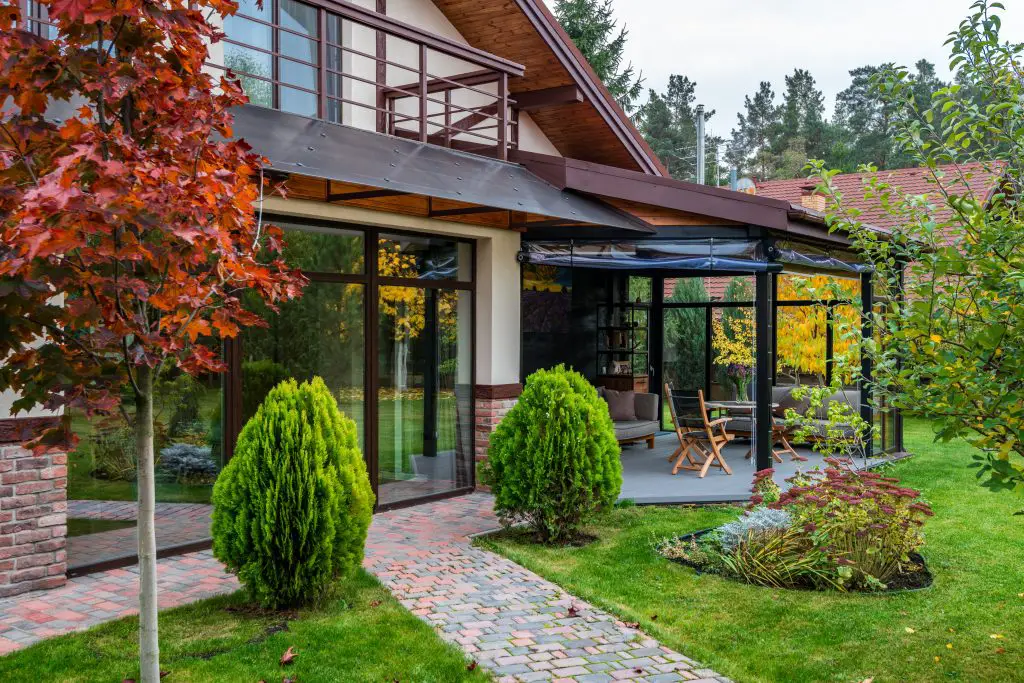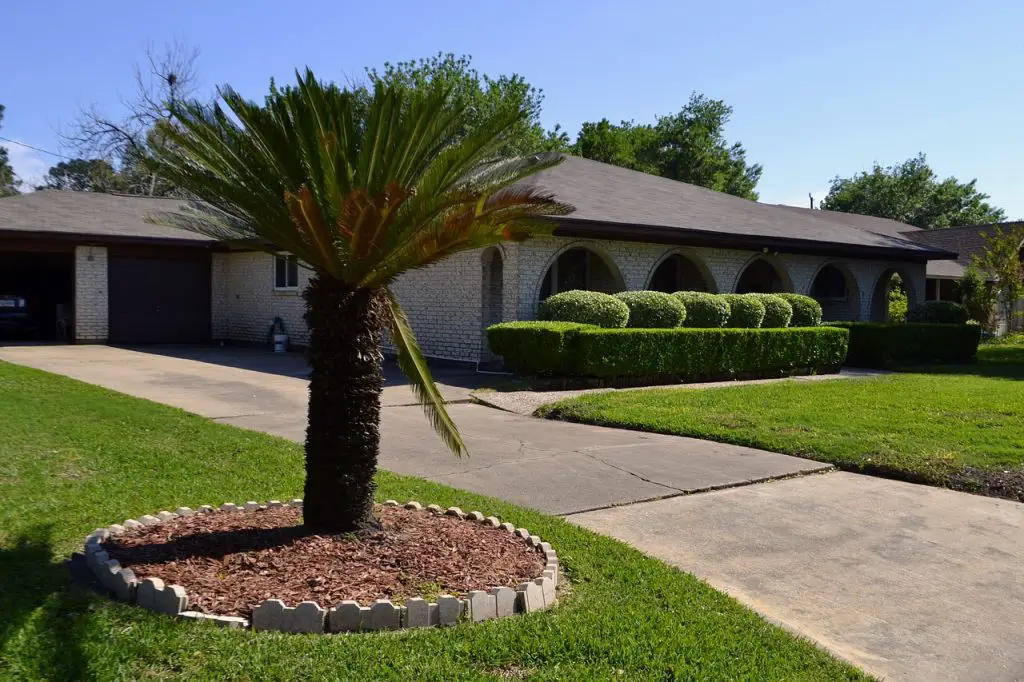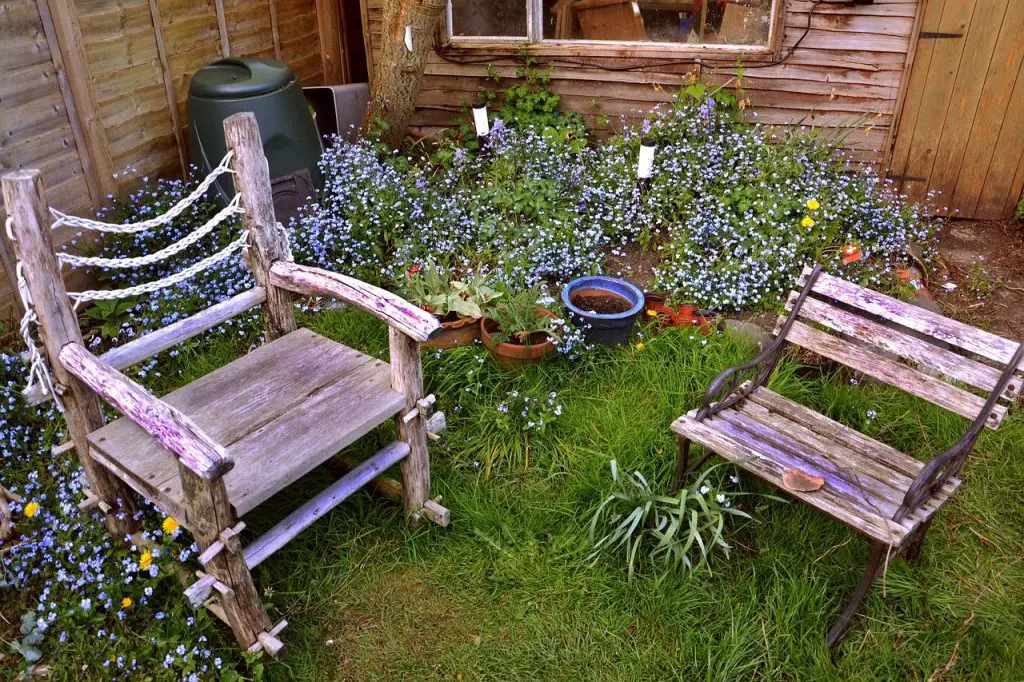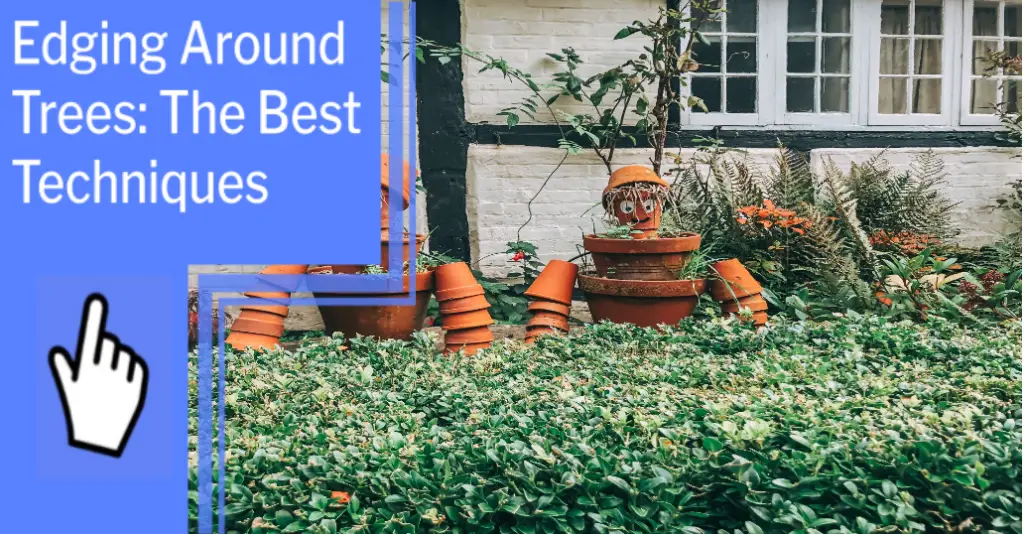What you find on this page:
Trees are an integral part of lawn decoration that can last for family generations if properly cared for. Placing edging around trees with shallow roots is an effective way to spruce up the beauty of your yard while also helping to care for the tree itself. There are dozens of different styles of lawn edging around trees, each with its own benefits.
If you’ve been curious about edging around trees ideas for your yard, we’re here to help. Read on for a quick guide on how to do edging around trees.
Why Should You Be Edging Around Your Tree?
Putting landscape edging around trees isn’t just a decorative practice to add a few designs to your lawn. From protecting a tree to helping to beautify your property, there are plenty of reasons why you should begin edging.
Maintaining Shape and Form
One of the most dominant benefits of edging around a tree is to maintain shape and form. Edging can help stop a tree from sprawling out and fend off many things that may change the shape of a tree.
It also will help maintain the shape and form of your yard. Some styles are more rigid and can stop weed growth, pests, and other nuisances. Edging your trees can provide a yard-wide benefit rather than only helping to improve the tree itself.
Creating Edge Tree Rings Protects Plants Trunks
Edging is also a protective measure to stop damage from coming to your tree. There are more than pests and weeds in your yard; passing animals and people can cause a great deal of damage.
One thing that edging is particularly helpful with is stopping mechanical damage. It can be easy to accidentally mow over a tree’s root when doing yard work or to damage the bark with a weedeater.
By making a creative circular or square edging around a tree, you provide a barrier of defense against human mistakes. It’s an excellent way to not only protect your tree but to make sure you don’t accidentally ruin one of your expensive lawn care tools.

What Not to Do When Edging Around a Tree in Your Garden?
Edging your trees isn’t a difficult task, but that doesn’t mean there’s nothing you can do to mess it up. For example, not preparing properly is a quick way to ruin your edging. Underestimating the room and the budget that you need can also curtail your attempt. Finally, make sure that you aren’t edging with materials that could harm the tree.
With what not to do out of the way, here are some of the quick ways you can prepare yourself for success.
Preparation
The first step to creating protective edging around your trees is to prepare for the task. Survey your yard and take stock of the room and materials you require. It’s also a good idea to set a budget at this stage so that you don’t end up biting off more than you can chew.
You also should make sure you have all the required materials before starting. If you stop early to buy more mulch, you can end up with a mismatched yard. If you end up having to finish the task over the course of days, it may harm the effectiveness of your edging.
Tools Required
You won’t require too many tools for the average edging job. Make sure you have whatever edging materials you’ll be using. You also may want prepared soil, weed deterrent, and other protective measures ready.
A small shovel is often enough for most edging jobs. Make sure you also have protective gear such as gloves and a set of gardening clothes you don’t mind getting dirty.

Stone Edging Around Trees
Stone borders around trees are highly effective for protecting your tree. You won’t have to worry about machinery accidentally hitting the tree as the stones will undoubtedly stop them first. Many weeds will also find it more challenging to penetrate stones compared to other edging materials.
The stone you use can also be decorative, helping you to customize the appearance of the display. You can implement designs, make a higher wall, or turn the base of your tree into another bed of plants.
Brick Edging Around Trees
Brick edging is a popular method of stone edging. One of the most significant benefits is that bricks are relatively inexpensive and easy to find. You can usually find bricks at a low cost at your local hardware or gardening store. They’re also easy to stack and use and usually come in a uniform shape for a homogenous, well-fitting design.

Pine Straw Edging Around Trees
Pine straw edging has many benefits, but there are some cons to get out of the way first. For example, straw is exceptionally light, meaning that it will blow away in normal conditions. It also won’t last as long as many other materials, quickly deteriorating in the rain or summer heat.
Still, pine straw provides a lovely aesthetic and splash of color to your yard. It also can help a tree be healthier by providing nutrients to the soil that stones can’t. Finally, pine straw is cheap, and you can buy it in bulk at a low cost.
Concrete Edging Around Trees
Concrete edging doesn’t quite provide the natural feel that many of us would want, but it’s excellent for protection. Concrete is also generally inexpensive and something that you can make yourself to provide a bit more customization. In some cases, you can even pour the cement around the tree itself, though this can sometimes cause issues with growth.
Edging Around Trees With Decorating Rocks
Decorative rocks are a great way to customize exactly how you want your edging to look. You may have sentimental rocks that you and your family have painted or otherwise decorated that you want to use for this. Ultimately, it provides the same benefits as edging with stones while adding much better customization.
However, make sure that the rocks are decorated safely. If you use chemical stains or some types of acrylic paint, this can seep into the soil and damage the tree’s roots. You also should make sure the decorative rocks won’t be negatively impacted by rainy weather.
To this end, you may choose some sort of gardening rocks. Volcanic rock or some types of pumice are common to find in most yards. Adding these can help bring together your yard design and add a splash of color.

Plastic Edging Around Trees
Plastic edging is an inexpensive way that you can get edging to your trees without having to put in a significant amount of work. It also comes in a variety of different styles that you can use to help customize your yard. It’s an easier alternative to work with than the heavy-duty green circular metal edging that goes around trees in some yards.
One of the most common ways to see plastic edging is with simple thick circles. Plastic wrapped into a circle around the edge of the tree can help to prevent weed growth and provide a barrier of safety. It also is often relatively low-profile, making it not stick out too much in your yawn.
Plastic isn’t without its issues, though. Some plastics can become brittle after being exposed to the sun for too long, making them chip away. They also may become sunbleached, which may make your yard look worn down.
Best Edging Around Trees in Lawns
If you’re still deciding what to use for edging around trees, mulch is an inexpensive product that you can find at nearly any local store selling gardening supplies. It also comes in a variety of different woods, which can help you customize your lawn’s appearance.
Mulch, like straw, is also fantastic for the health of your tree. As the mulch decomposes, the wood enriches the soil and helps make the tree much healthier. Because of this, some gardeners will use mulch to replace fertilizer, especially if they’re trying to limit the chemicals in their garden.
Mulch can also work to create a very small edging around trees and provide a bed for other plants. You may put a layer of mulch down before some plants, for example, to help fend off pests and enrich the soil.
That isn’t to say that mulch is without issue, of course. Like straw, mulch also will decompose rather quickly. You can expect to need to rebed your tree with mulch a few times a year, as the wood will decompose away. It also will lose much of its luster soon after mulching, especially if your tree drops leaves that will mix in with the mulch, making it look untidy to some.
Conclusion
Edging around trees is a great way to provide some decoration to your yard while also helping to promote the health of your trees. By protecting to your trees, you can ensure that their roots and bark are safe from pests, weeds, and accidents with lawn care equipment.






